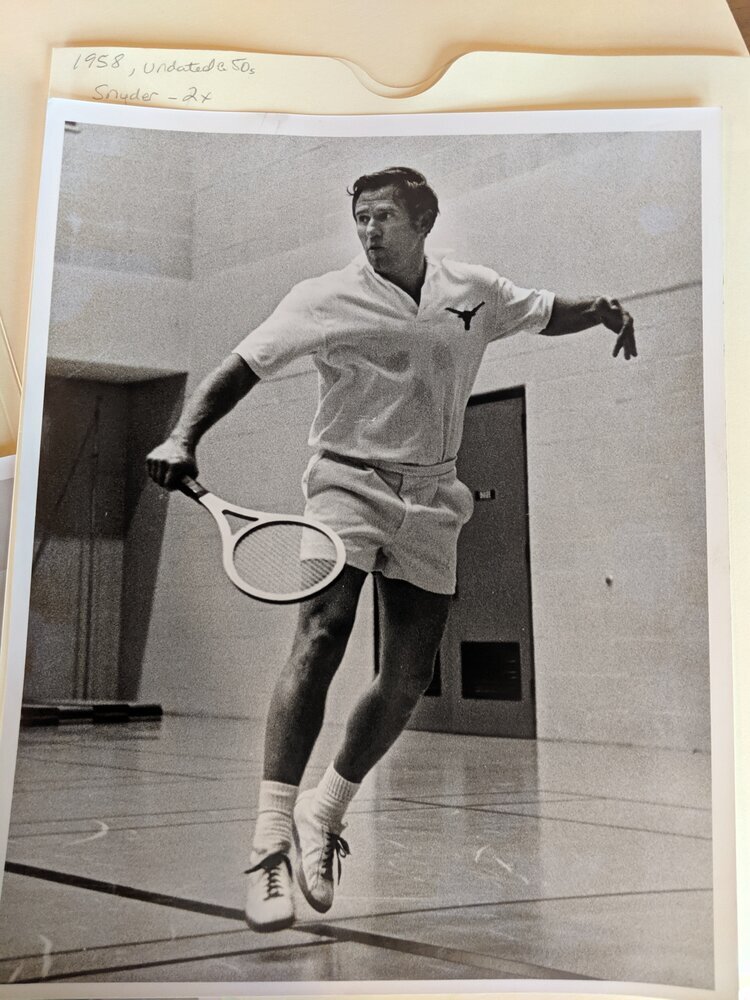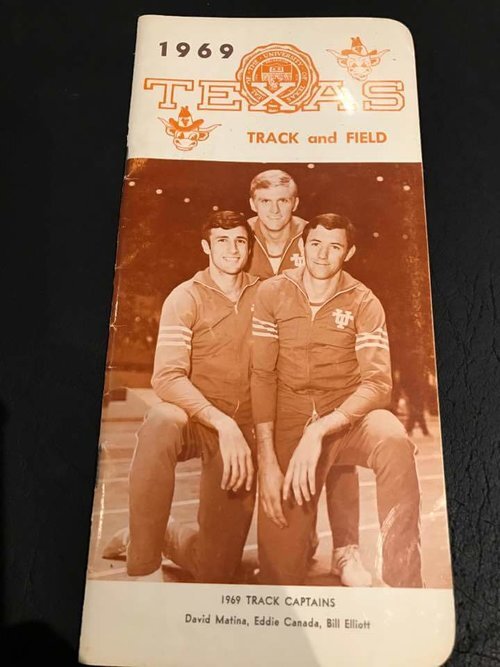Click on “view in browser” at the top of the page if images do not appear, the images are distorted, or the links are not visible.
|
Tomorrow in Orange, Texas, the Longhorn Nation Remembers Steve Worster
Memories, photos, and comments from fans are at:
|
Professor Larry Carlson shares his boyhood memories of Steve Worster in an article titled #30 is #1.
The following is a personal story about Worster’s impact on Junior high school and High school kids in the late 1960s. Professor Carlson was one of them, and his story is told through the eyes of a young boy.
Larry says :
My niece, Kim, still calls me “Uncle Woo,” even though she has passed the 39-year mark. Worster reigned supreme as the best fullback in college football (1968-70) and was my idol. I mean, the guy powered over every defense he faced. He was coolly all business on the field, and the UT co-eds seemed to love him.
Worster, it should be remembered, is sometimes acknowledged as college football’s first “national recruit.”
“Worster was the biggest star on a team with a Milky Way full of them. I had a poster of him on my burnt orange bedroom wall. And I really wanted another cool one that Dave Campbell’s Texas Football was offering for sale, the one that featured a sideline close-up of the rugged fullback’s face, marked by dried blood across the bridge of his nose.” The rest of Larry’s article about Steve is at:
|
1914 – Dick Hooper – one-arm outfielder, helps Horns win the State of Texas Championship.
|
1914- Billy Disch wins the TIAA Championship with a 30-5 record. One publication states this team was “perhaps the most phenomenal and successful “ team in college baseball” through 1914.
|
Dick Hooper, the one-armed talented outfielder, played an important part in the success of this team. Hooper is top middle in the photo below
|
|
|
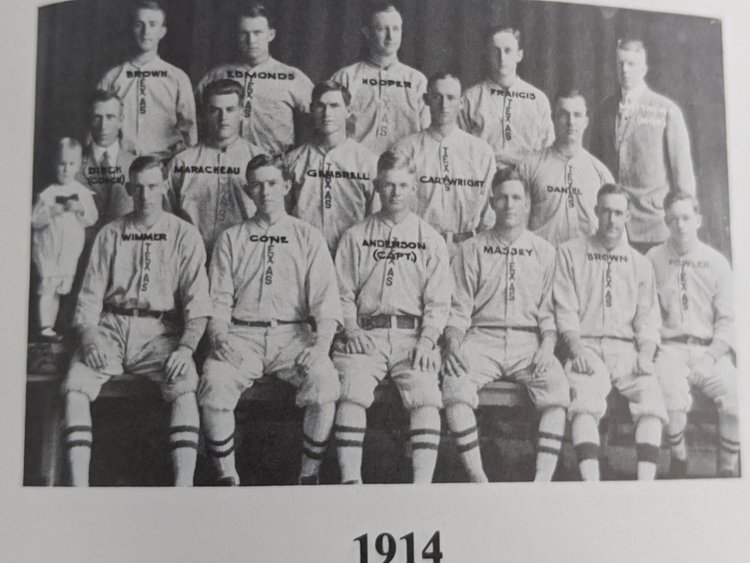
|
Dick Hooper was an All-Conference player .
|
|
|
1905: As a young boy, Dick Hooper is seriously wounded by a shotgun blast while hunting. The injury resulted in the amputation of his left hand and arm below the elbow.
|
|
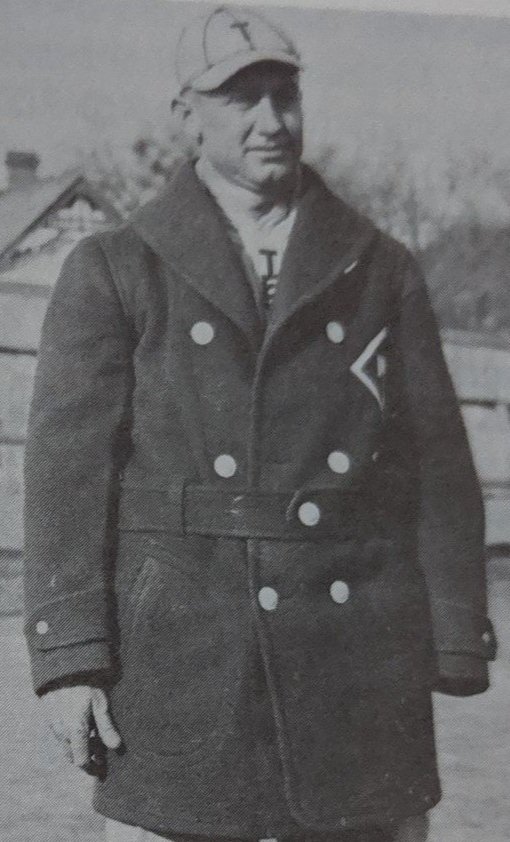
|
|
|
Some Bio information about Dick Hooper follows:
1913: Hooper transfers from Baylor to the University of Texas, where he is ruled ineligible to participate the first year on the school’s varsity squad
1916: Dick Hooper is chosen as the Longhorn baseball team captain. However, he is declared academically ineligible just two weeks into the season.
In later years as a wealthy Oilman, he tried unsuccessfully to bring a professional baseball team to Houston. Still, Dick Hooper and other investors did plant the seed that eventually led to Houston procuring a professional baseball team.
|
|
We don’t want any trouble makers around here.
The Austin airport and the Drag after the win against Arkansas in the Big Shoot-out in 1969 was an event that I will never forget. The comments below from an unknown author describe the whole scene.
|
Texas is National Champion in the 100th year of College Football.
After the Arkansas game, Royal says, “We had one great play, and we had a gutsy call, but the rest (of the game) stunk.”
Getting off the plane in Austin after returning from the Big Shoot-out. Fans surrounded the plane. Royal said, “I don’t think I’ll ever see the time where I had to remain aboard the airplane simply because I was afraid to get off.” Security finally got Royal a squad car that got clearance from the airport to use the runway to exit on the other side of the airport.
After the game, the 1969 Arkansas victory the streets around the university were wildly joyous and crammed packed with cars not moving and thousands of students hollering and hugging each other.
Not everyone was happy with the events that disrupted Austin that night. The police, outmanned, mostly watched. A student wrote the “Texan” that he asked a cop when the police action would start, the cop asked him what he was talking about, and he protested.
“But officer, they’re disrupting the orderly flow of traffic, disturbing the peace, drinking in the streets, drinking while driving, breaking beer bottles all over the Drag, defacing public and private property.”
The officer responded, “Beat it kid, we don’t want any trouble makers around here. “
|
Dana LeDuc’s Mean and Tough list from the Aker’s era.
|
|
|
|
|
2022- Coach Vermeil with Dana at the NFL Hall of Fame ceremony. I recognize Dana’s sandals as a reproduction of one made in the late 1960s. ???? I think my mother has mine in the attic in Odessa.
|
|
|
Billy,
Going back in time, these are the guys that, if I were walking through a dark alley in a bad part of town, I would want with me.
|
|
|
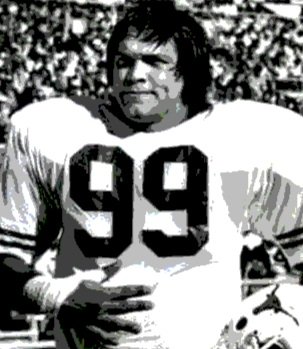
|
|
Steve McMichael-tougher and meaner “than a junkyard dog” rattlesnake, etc.
|
|
|
|
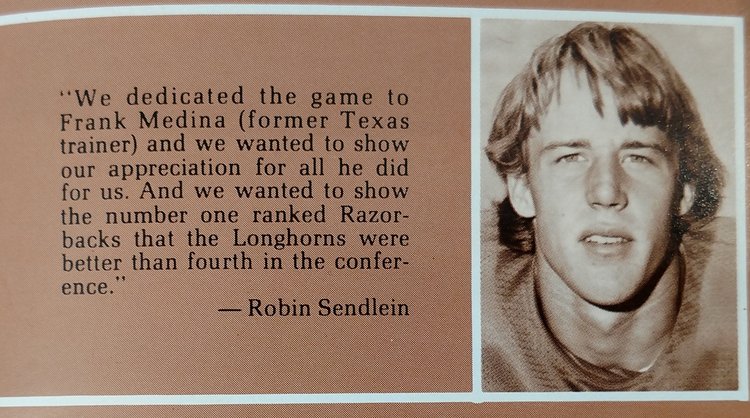
|
|
Robin Sendlein-anybody who eats glass on their recruiting trip makes my team. Tall, lean & wirery but could pack a hell of a punch. His dad ate glass also.
|
|
|
|
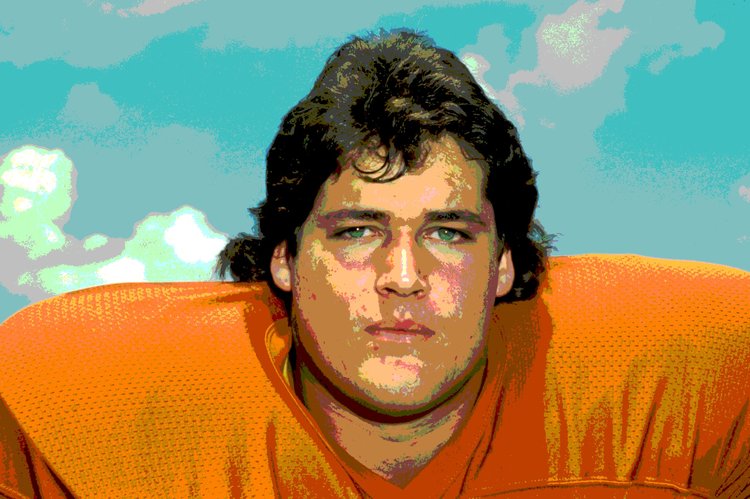
|
|
Mike Ruether a large, powerful, defensive end with whom nobody on the team would mess with.
|
|
|
|
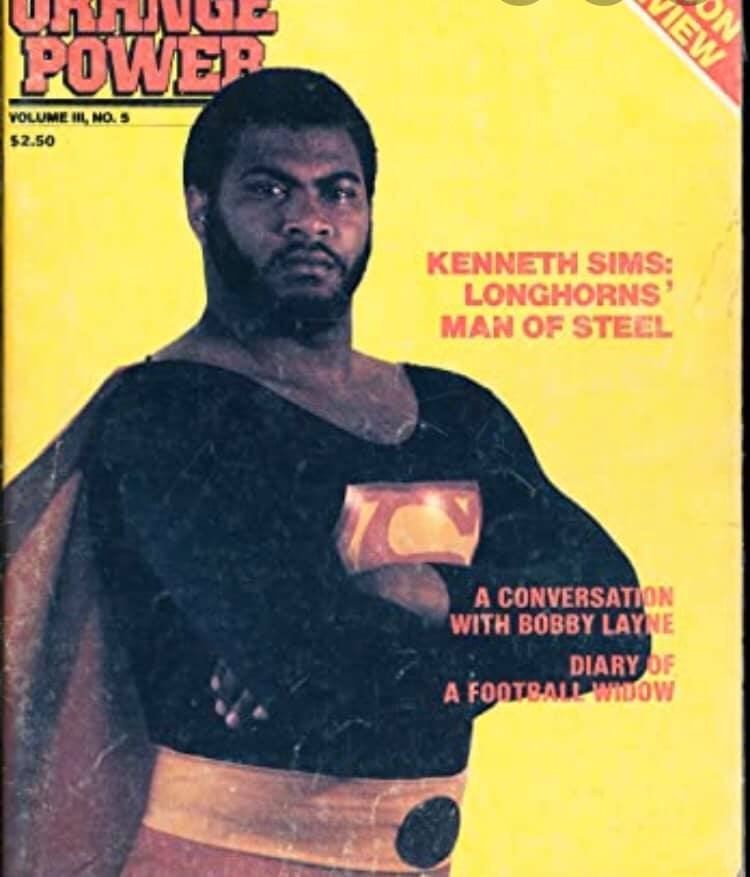
|
|
Kenneth Sims-a gentle giant with tremendous power and, if pushed to a point, it would not have been pretty for the opposition.
|
|
|
|
|
|
|
Dewey Turner (’82)- Dana says he was a large, powerful, defensive end with whom nobody on the team would challenge.
Larry Carlson says “
Ultimately, Dewey succeeded at Texas as a defensive lineman who could rush the passer. Turner was a physical specimen and a physical player.
|
|
|
|
|
|
|
|
|
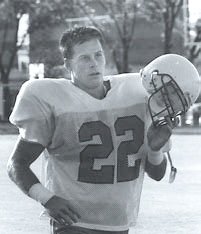
|
|
Comments by Professor Larry Carlson. “ John Hagy was kicking ass in no time, despite almost zero weight training before college. Hagy could just play… fast, savvy, and a hitting machine. Man, I loved watching John Hagy compete.”
|
|
|
|
Professor Carlson says about Ricky Churchman, “ he sure was a ferocious hitter as a safety. I think he would’ve had an All-Pro career with the 49ers if he hadn’t been badly injured early on. He was a starter and a standout as a rookie, in the same defensive backfield with Ronnie Lott. And they won the Super Bowl the next year.”
|
|
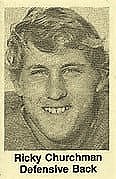
|
|
|
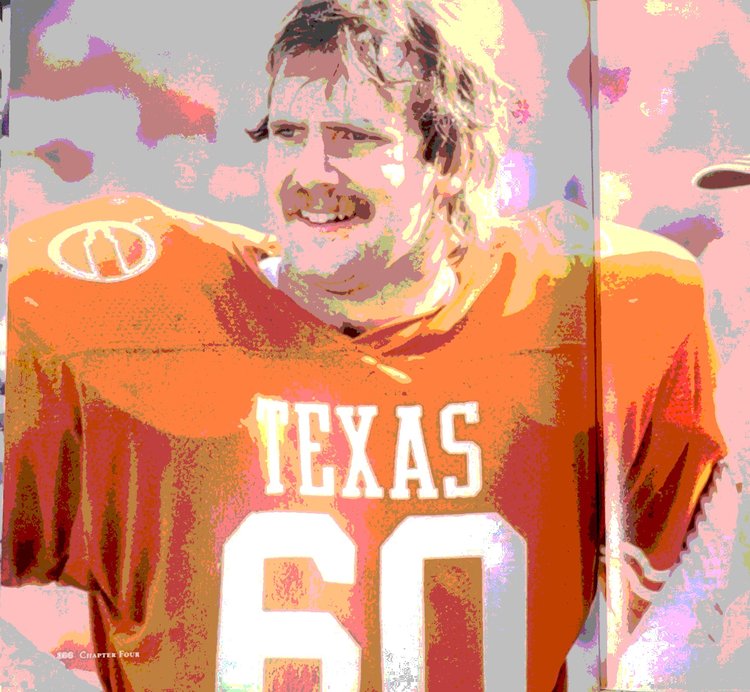
|
|
Jeff Leiding absolutely annihilated a Razorback on the opening kickoff his first year. Completely blew him up. I would list that shot as one of the all-time snot-bubblers in Longhorn history. Everybody remembers that he was the bellcow of that ’83 defense, probably the best one ever at Texas.
|
|
|
|
The Texas defense emulated Leiding’s personality – cocky to the point of arrogance but backing it up with a physical style of play that simply wore opponents into submission.
|
Competitive women’s Intramural and Club Sports were the precursors to Title IX, AIAW, and NCAA-sanctioned women’s sports.
|
|
|
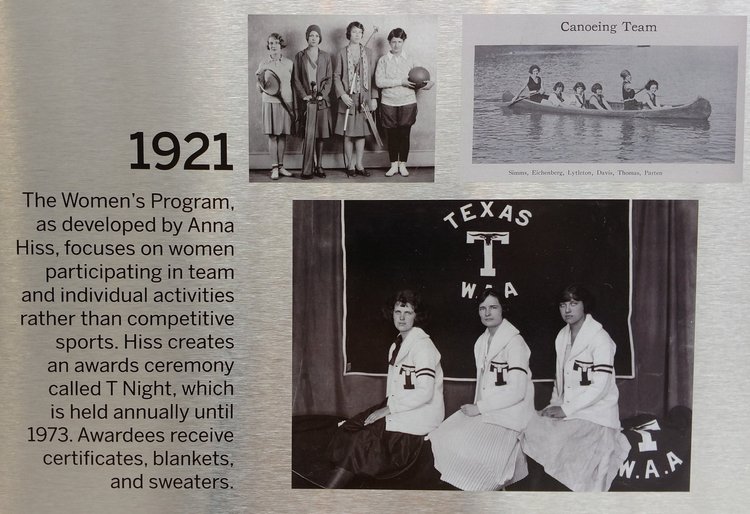
|
In 1921 Woman were told that sports should be construed as a social and fun activity requiring “lady like” composure while participating.
|
|
|
Lady like composure was eventually rejected by participants. Women wanted to compete and develop athletic skills just like the men.
|
|
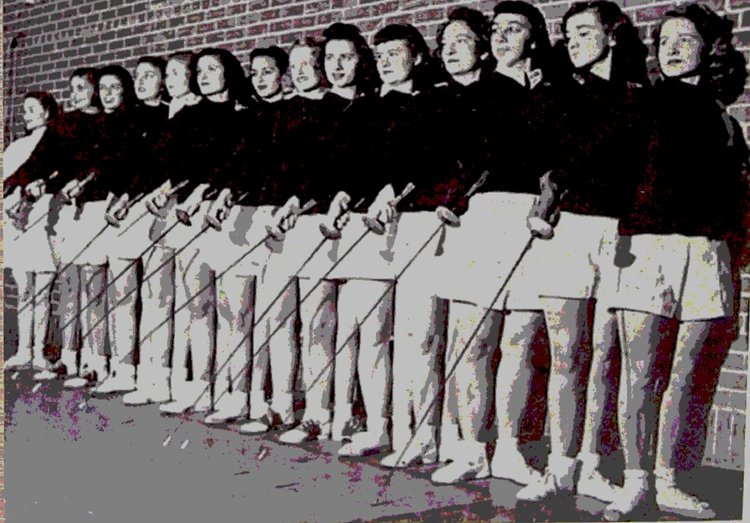
|
|
|
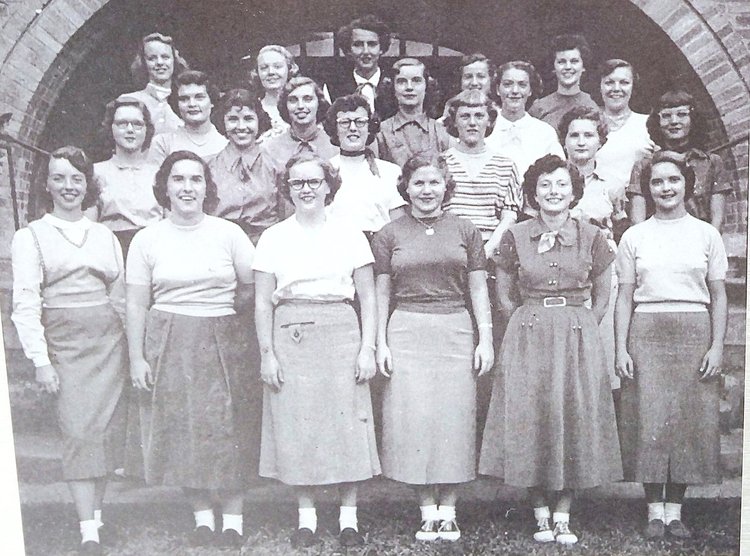
|
The growth of intramural and Club sports offered many students a chance to be part of a team as managers.
|
|
|
|
Some of the club members become very proficient in their respective sports and mastered them to such an extent that they could compete with the best anywhere in the country.
Starting in 1917, a system was established for members to accrue points to reach certain milestones. Once the member earned enough points, she was entitled to receive the “T”. The ladies wore Their “T” with pride and a sense of accomplishment as shown below.
|
|
|
|
The Turtle club – formed in 1920 -was the oldest and largest club. In this photo, the club members are wearing their sweaters with a turtle motif on the sleeve.
Some Clubs were discontinued as the years passed, but here is a historical list of the club sports at Texas.
tennis, deck tennis, ping pong, archery, golf, swimming, baseball, hockey, basketball, Rifle, Orchesis (dancing), bad minton, Bit and Spur, polo, Canter, Touche’, Gymnastics, walking, and yes, even proper posturing.
Thousands of women entered some form of tournament play, with most participants coming from sororities, dormitories, and independent groups.
|
|
|
Acceptance to a club team was a on-campus prestigious honor.
Clubs wrote team songs as a point of unity for the members.
The Tennis club song
Got a touch of Texas in our swing;
Got a touch of Texas in our ping;
When you see that ball a comin’;
You’d better start a runnin’
‘Cause, we put ‘em away.
|
TLSN is an independent organization celebrating Longhorn Sports History and assisting qualifying Horns who need temporary financial assistance.
The TLSN website and newsletter are free, educational, historical, and insightful, sharing Longhorn sports history through the eyes of those who created it.
TLSN is not associated with the UT Athletics Department or any organization closely aligned with UT.
Https://texaslsn.org
|
|
|
